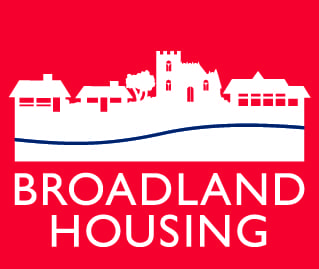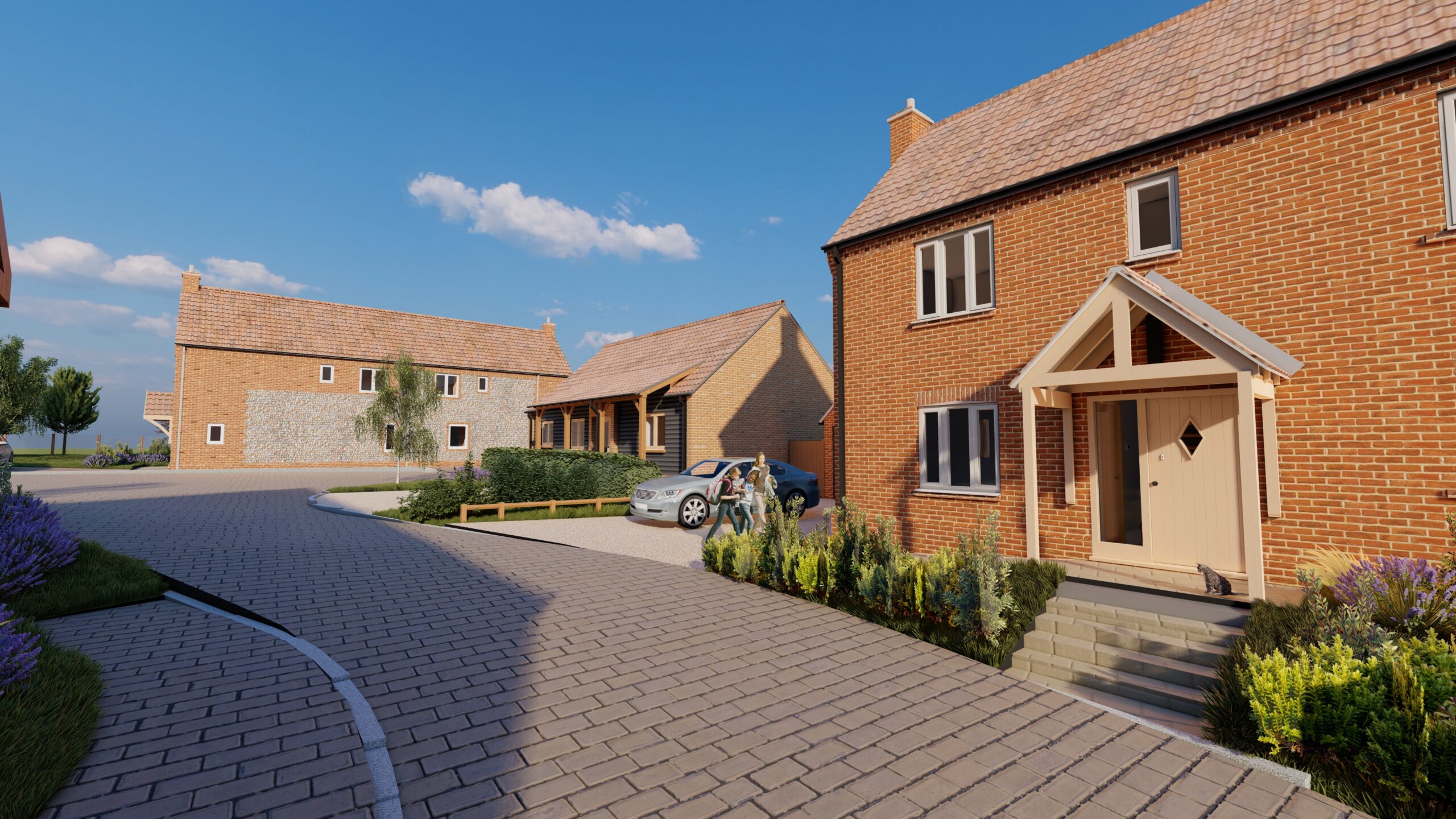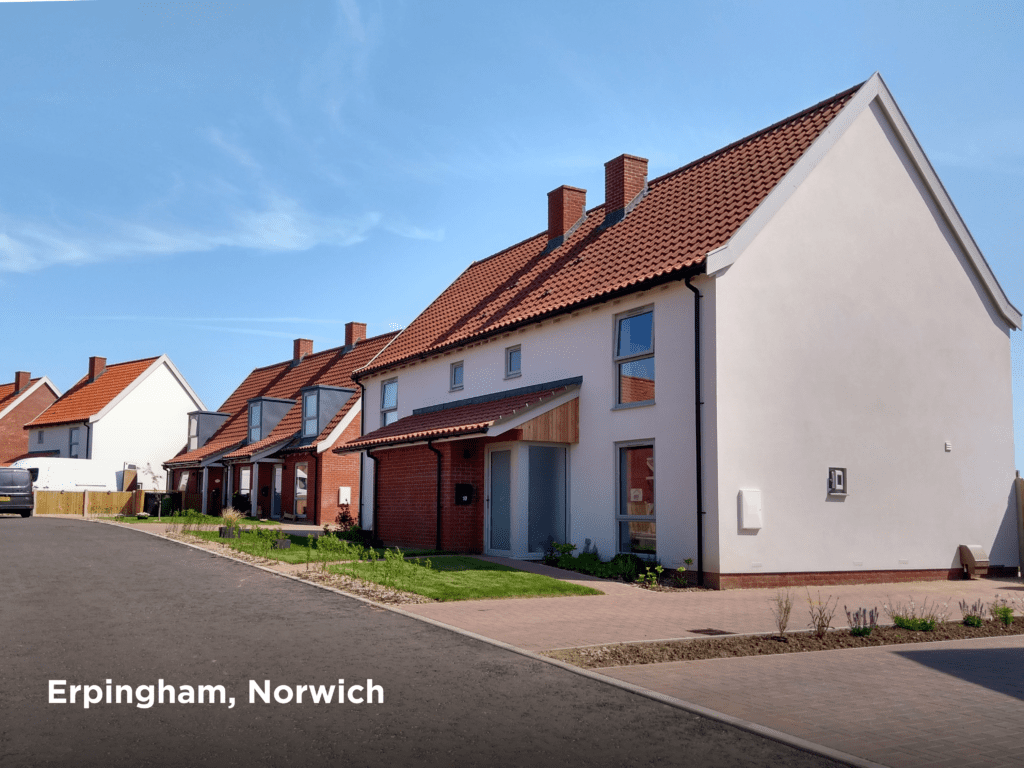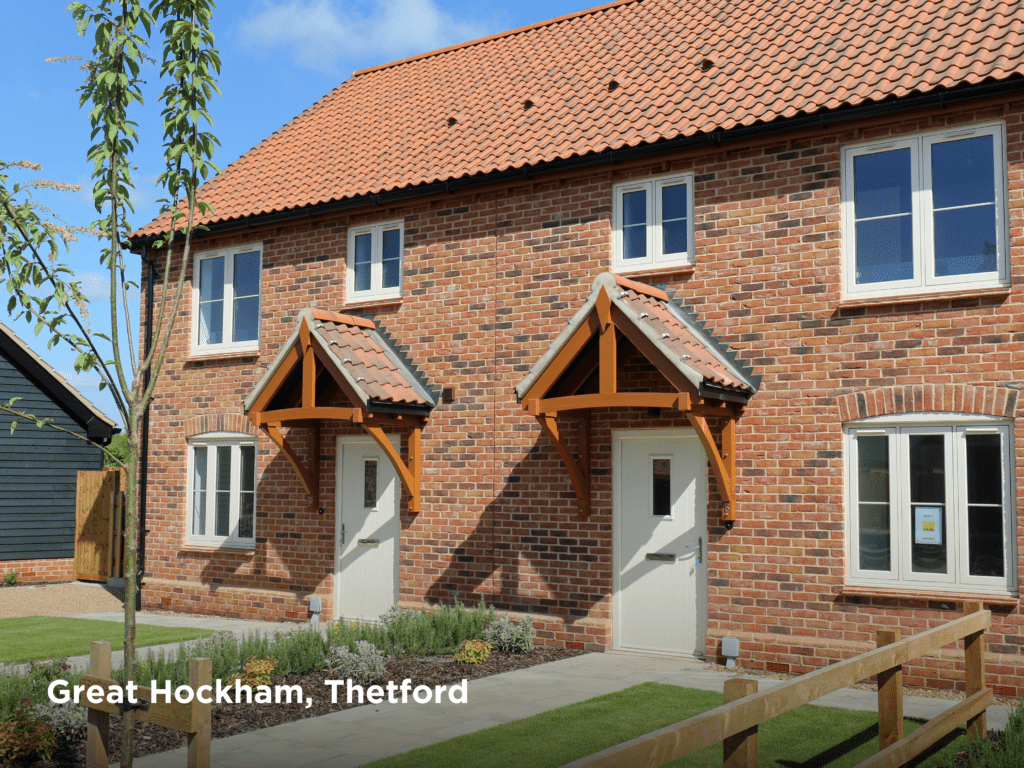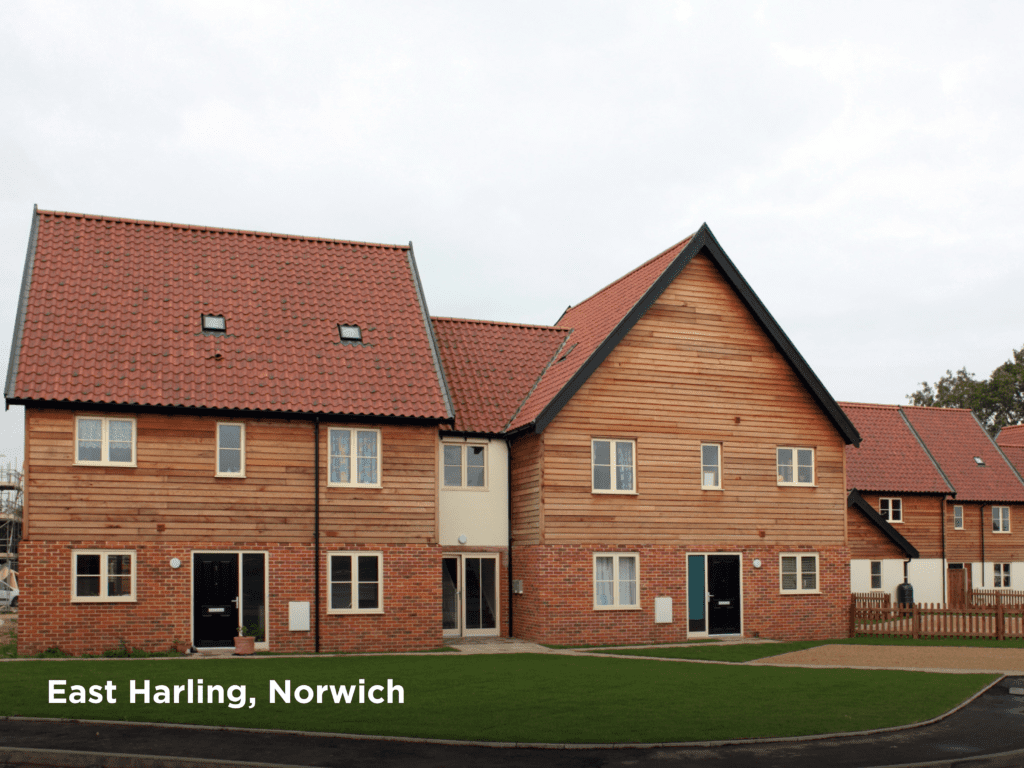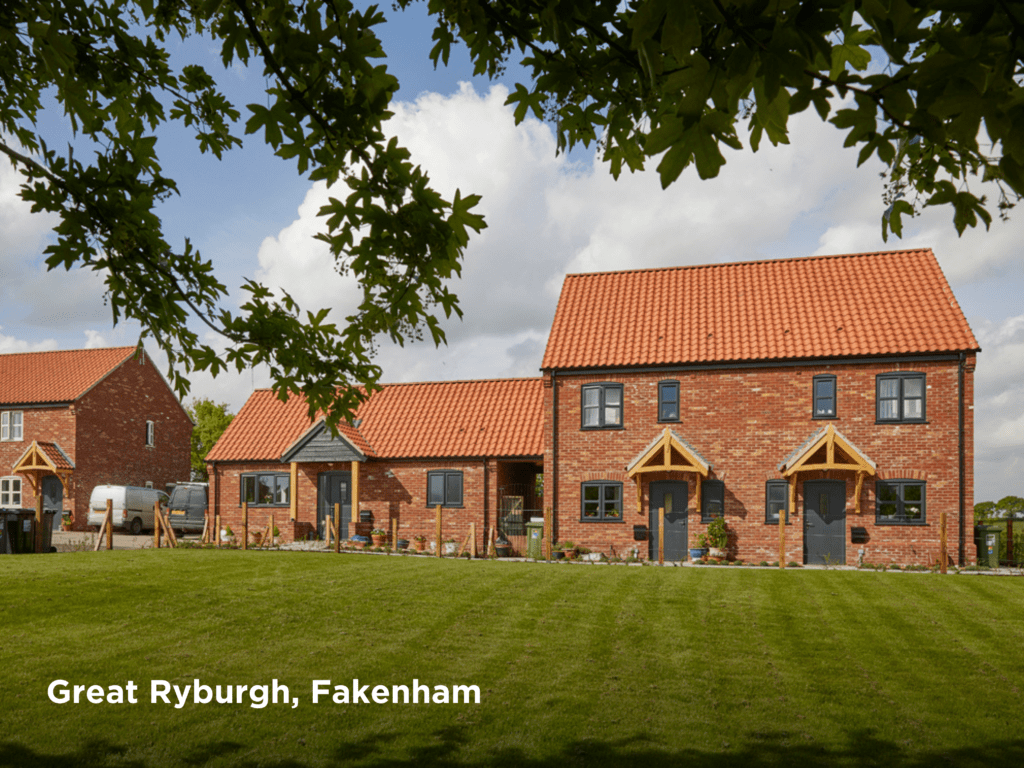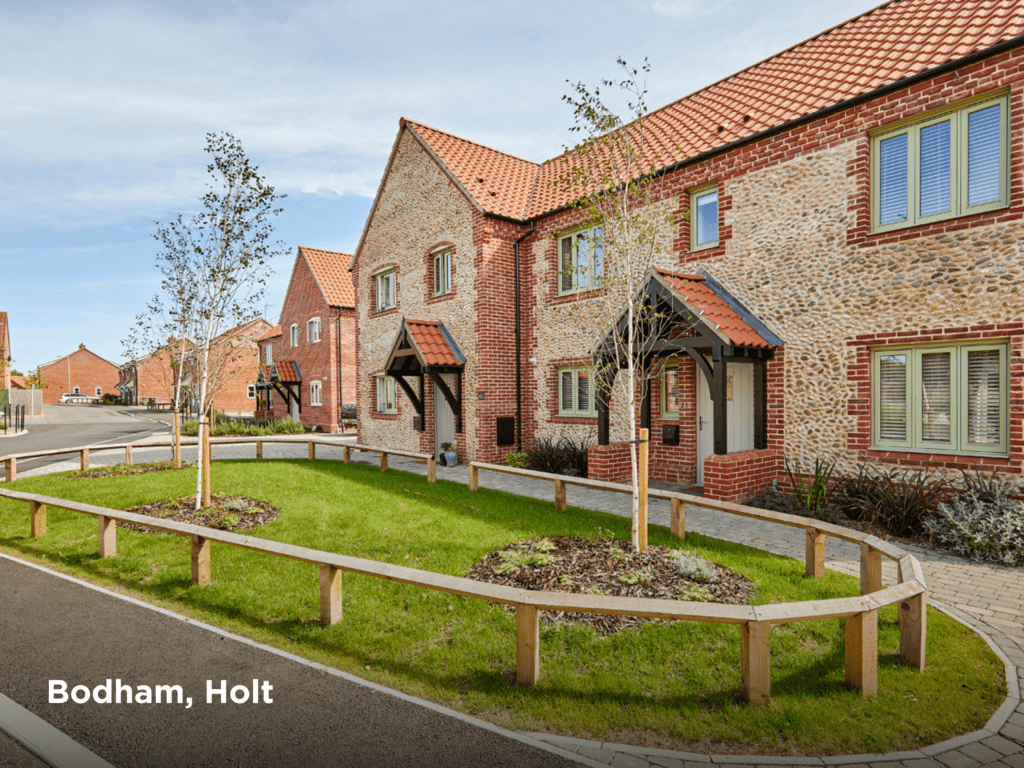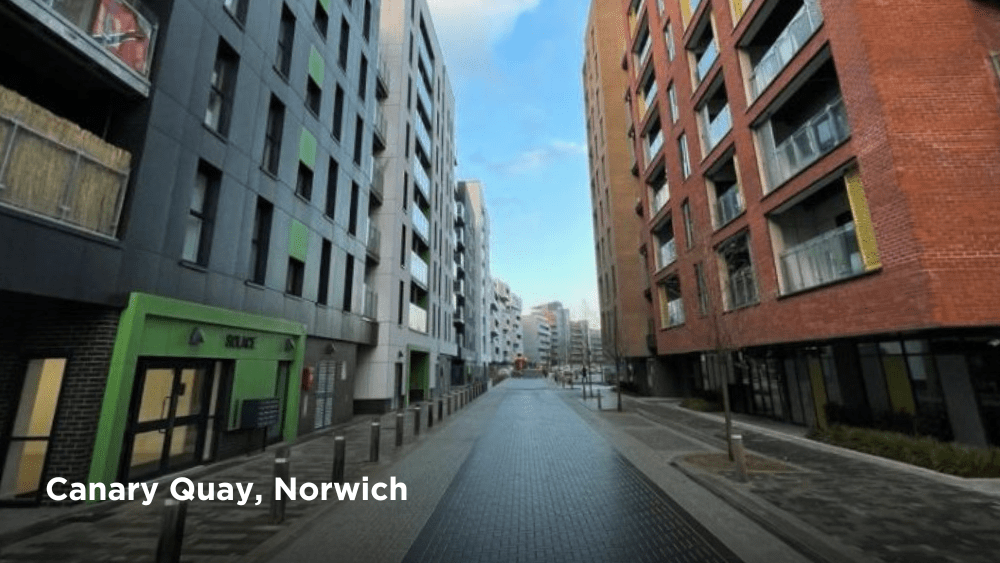We are an award-winning developer of new homes
Planning and Design
Our award-winning planning and design customises a range of standard house types (from bungalows to 4-bedroom houses). We carefully select local building materials, architectural features and traditional styles to match the village’s individual character.
In rural Norfolk, demand for holiday homes has pushed house prices far beyond the reach of many local people. More affordable homes are desperately needed. However, new housing schemes need to respond to individual communities.
Traditional materials
At Broadland we are building beautiful homes that complement the traditional Norfolk landscape. We design our schemes to grow thriving rural communities.
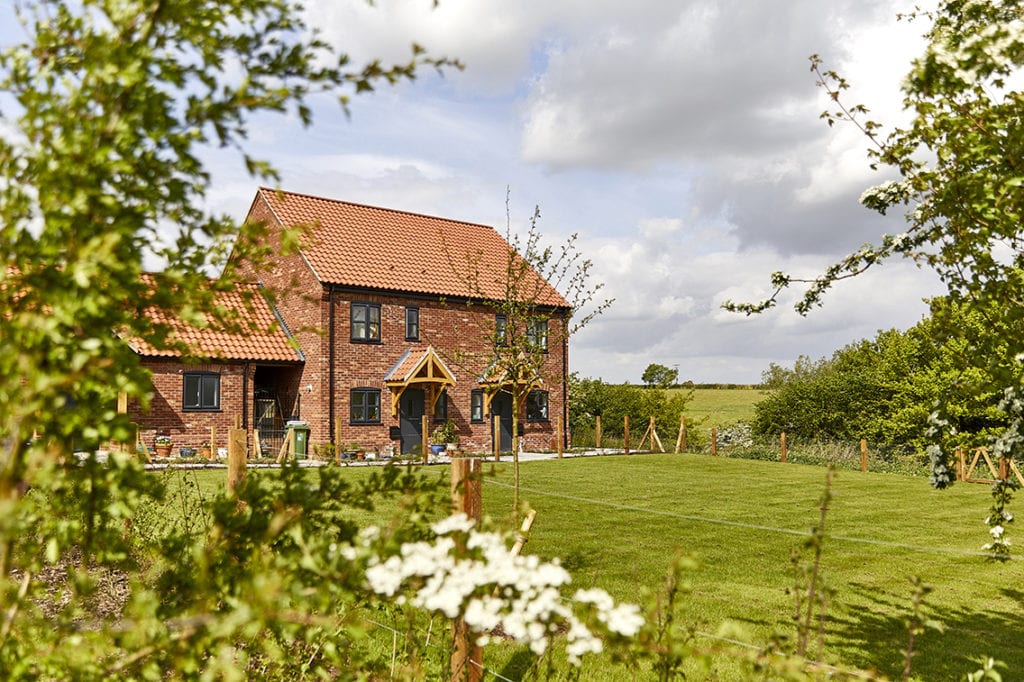
For example, at Great Ryburgh (above) our affordable homes feature:
- artisan brick and clay tiles
- flush casement windows (with frames in two colours to simulate the weathering effects of time)
- large, well-detailed timber porches with clay tiles, brick plinths and authentic eave details.
At Bodham the focus is on traditional flint. Black timber cladding is used to stunning effect at Trunch.
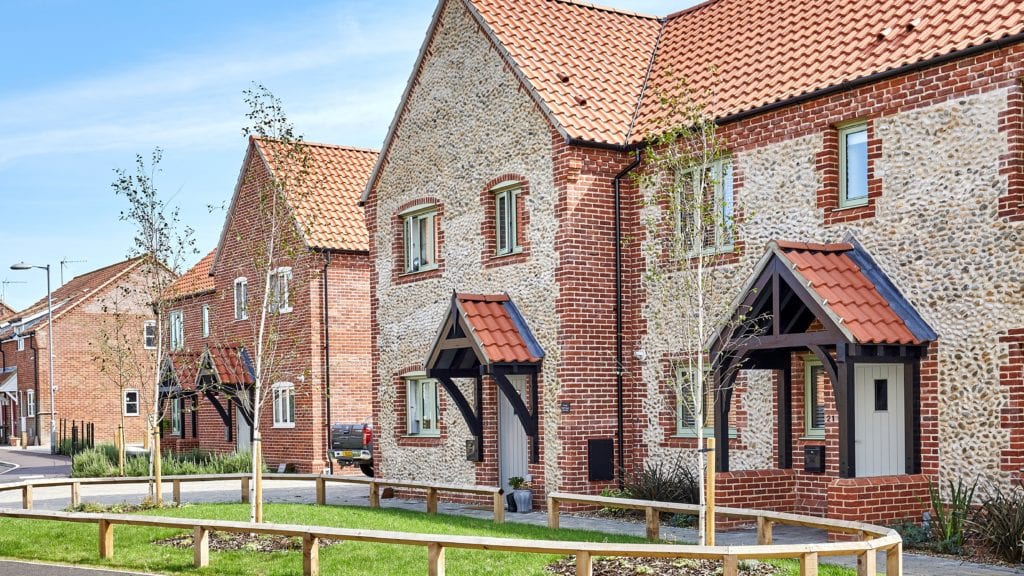
The interior design of the homes is generic. However, it has a much higher specification than ‘typical’ affordable housing. The quality of the interiors is what our tenants would aspire to if they could afford to buy on the open market.
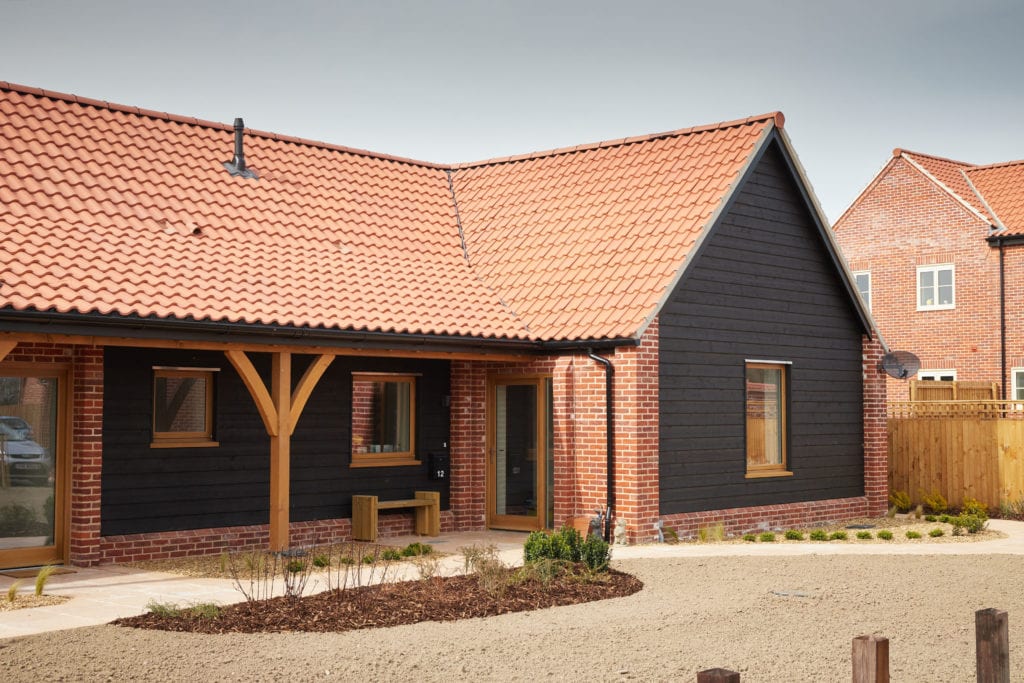
Throughout construction we link local firms of builders, architects and landscape architects in real time using Microsoft Teams. This approach supports the site manager to deliver the original design intent. There is no need to rely on generic standards that produce an identikit development with little respect for or connection to the local community.
Building communities
Our new rural housing scheme designs are helping to create flourishing communities. People who have lived and worked in the area for generations, and were no longer able to find housing they could afford, are now able to remain close to their roots and their families.
Norfolk is a county with an ageing population and social isolation is a significant factor. With this in mind, we ‘design in’ communal spaces at our schemes that actively encourage neighbourly interactions. Community greens draw in children from the wider village or area to meet and play.
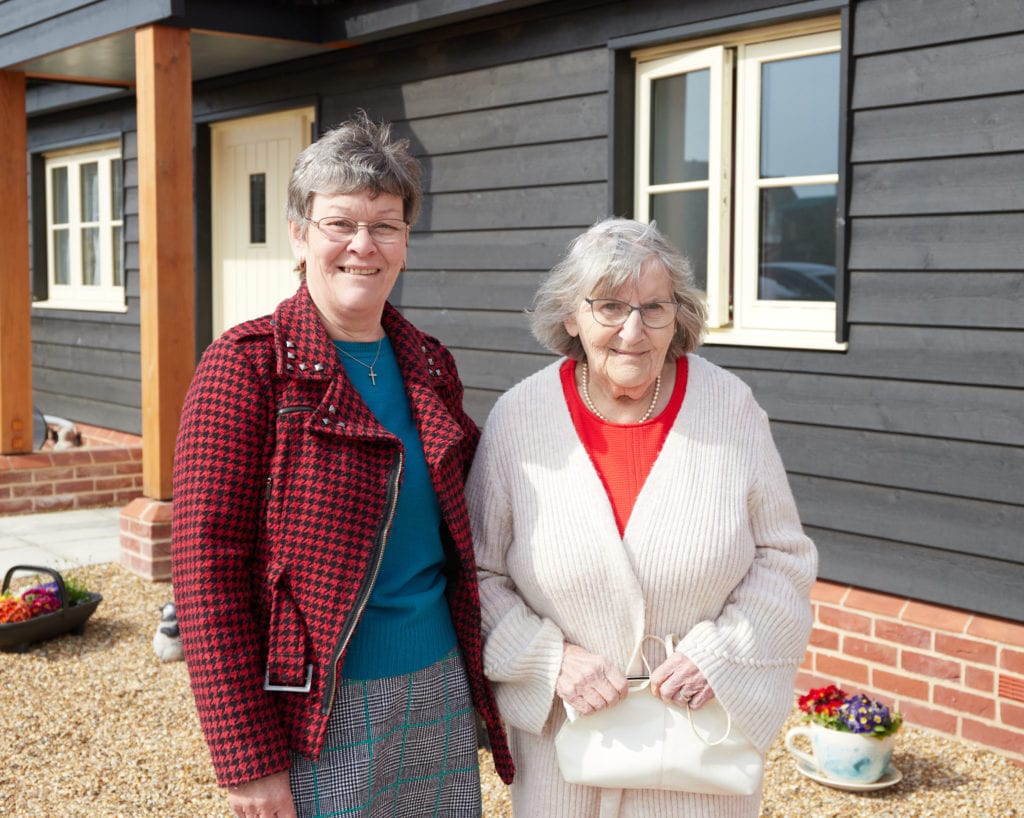
Importantly, because we have deliberately not differentiated the designs for our social rent, shared ownership and open market sales homes, we are breaking down the stigma often associated with social housing.
Historically, Broadland has experienced significant opposition at the consultation stage of new developments from existing residents concerned about affordable housing being built in their area. However, with this new homebuilding model, we are finding that communities are pleasantly surprised to see the quality of the house designs and significantly more amenable to new developments in their village.
